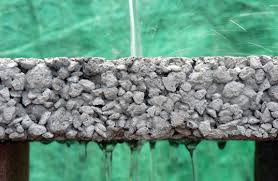Rain storms can be disastrous to landscapes, especially in the North-East. Puddles in both the lawn and beds can kill plants and look bad for months at a time, if it is especially rainy. Here are a few ways you can protect your lawn by draining the water, and make it look natural and beautiful.

1. You can turn drainage solutions into features that enhance your landscape, and protect natural water ways. Ditches can be designed with small stones and rocks to allow good drainage, but look like a natural stream. If you only want to create a small swale, you are okay to do it yourself, but for a small river, you should hire a professional landscaper because they usually have earth moving equipment. The best place to do this is usually a gutter runoff that runs into a water source. Planting ferns and other plants on the bank enhances the design.
2. Gutter drainage can be directed into rain gardens that can be butterfly and bird habitat. This type of garden is great for both drainage and design. Where are swale is a carrier of water, a rain garden is a destination. The idea of a rain garden is that water will drain quickly and sink into the ground promoting lush plant growth. Although a low spot in the lawn seems like a good place for a rain garden, these are usually soggy and saturated. Instead you should find a place in the lawn that dries quickly.

3. Driveways and patios are also susceptible to flooding. One way to avoid this is to bear flooding in mind before designing a patio or driveway. Creating a pattern that has holes in between the pavers is a great way to allow drainage. Laying the pavers on a layer of gravel is also good because it will drain quicker and eliminate most runoff. This could even be done with porous asphalt or concrete made with little or no sand, making small air pockets for water to drain through. These types of projects require a little extra planning, but draining can be very important.
With these simple tips in mind, rain storm water is manageable to deal with. Don't let the water ruin you landscaping. Be one step ahead of the storm and get prepared.
Tyler Kaiser
T. J. Landscaping
.jpeg)

